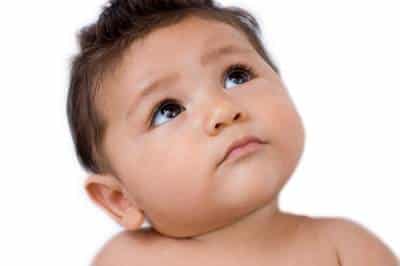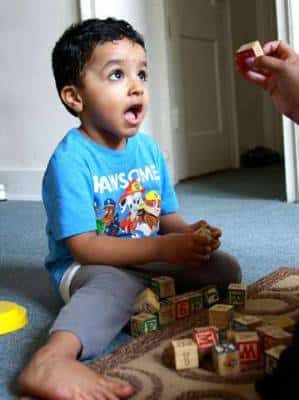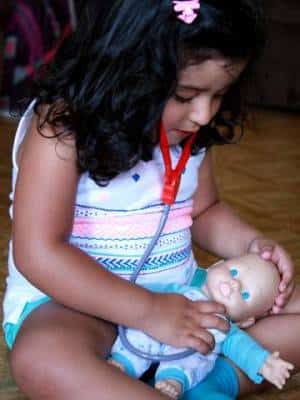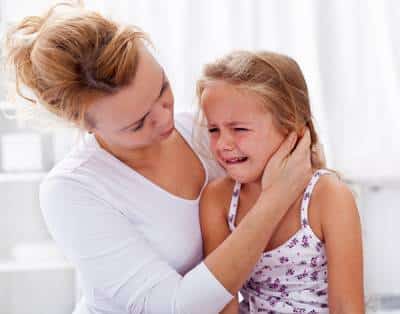Developmental Guidelines : What Most Babies Do at 6 Months

Social and Emotional Knows Familiar faces and begins to know if someone is a strangerLikes to play with others, especially parentsResponds to other people’s emotions and often seems happyLikes to look at self in mirror Language/Communication Responds to sounds by making soundsString vowels together when babbling (“ah”, “eh” , “oh”) and likes taking turns with parent while making sounds.Responds to own nameMakes sounds to show joy and displeasureBegins to say consonant sounds (jabbering with “m”, “b”) Cognitive (Learning, Thinking, Problem-Solving) Looks around at things nearbyBrings things to mouthShows curiosity about things and tries to get things that are out of reachBegins to pass things from one hand to the other Movement/Physical Development Rolls over in both directions (front to back, back to front)Begins to sit without proper supportWhen standing, supports weight on legs and might bounceRocks back and forth, sometimes crawling backward before moving forward Red Flags For 6 Month Old…
Developmental Guidelines: What Most Babies Do at 4 Months

Social and Emotional Smiles spontaneously, especially at peopleLikes to play with people and might cry when playing stopsCopies some movements and facial expressions, like smiling and frowning Language/Communication Begins to babbleBabbles with expression and copies sounds he hearsCries in different ways to show hunger, pain, or being tired Cognitive (Learning, Thinking, Problem-Solving) Lets you know if she is happy or sadResponds to affectionsReaches for toy with one handUses hands and eyes together, such as seeing a toy and reaching for itFollows moving things with eyes from side to sideWatches faces closelyRecognizes familiar people and things at a distance Movement/Physical Development Holds head steady, unsupportedPushes down on legs when feet are on a hard surfaceMay be able to roll over from tummy to backCan hold a toy and shake it and swing at dangling toysBrings hands to mouthWhen lying on stomach, pushes up to elbows Red Flags For 4 Month Old Babies…
Developmental Guidelines: What Most Babies Do at 2 Months

Social and Emotional Begins to smile at peopleCan briefly calm himself (may bring hands to mouth)Tries to look at parent Language / Communication Coos, Makes Gurgling SoundsTurns Heads Towards Sounds Cognitive (Learning, Thinking, Problem-Solving) Pays Attention to FacesBegins to follow things with eyes and recognize people at a distanceBegins to act bored (cries, fussy) if activity does not change Movement/Physical Development Can hold head up and begins to push up when lying on tummyMakes smoother movements with arms and legs Red Flags For 2 Month Old Babies Does Not Respond to loud soundsDoesn’t watch things as they moveDoesn’t smile at peopleDoesn’t bring hands to mouthCan’t hold head up when pushing up when on tummy Have a question? Want to learn more? Leave a comment at the bottom of this blog or email reachforthestars@achievebeyondusa.com and we will do our best to follow up with you. About Achieve Beyond: Achieve Beyond is an agency founded by…
What To Observe On A Child Who Might Have A Diagnosis Of Autism

As Speech Language Pathologists we need to be aware of some behavior/signs that children on the Autism Spectrum might have. It does not mean that every child with Autism will present these behavior/signs, but most of them will prompt us to make an accurate observation on the child’s responses to make the proper referral for an evaluation which can lead to an appropriate diagnosis. As Linda Watson, Ed.D.,CCC-SLP Associate Professor from the Division of Speech and Hearing Sciences at the University of North Carolina, Chapel Hill, NC wrote in different articles familiarity with the literature about the early development of children of Autism will improve the ability of professionals to appropriately diagnose and intervene young children who may have a form of autism. In her article “Toddlers with Autism, Developmental Perspectives”, she presented the development of young children with Autism by discussing the developmental domains of affective development, sensory processing and…
Developmental Guidelines: What Most Babies Do at 48 Months

Social and Emotional Enjoys doing new thingsPlays “Mom” and “Dad”Is more and more creative with make believe playWould rather play with other children than by himselfCooperates with other childrenOften can’t tell what’s real and what’s make-believeTalks about what she likes and what she is interested in Language/Communication Knows some basic rules of grammar, such as correctly using “he and “she”Sings a song or says a poem from memory like the “Itsy Bitsy Spider” or the “Wheels on the Bus”Tells storiesCan say first and last name Cognitive (Learning, Thinking, Problem-Solving) Names some colors and some numbersUnderstands the idea of countingStarts to understand timeRemembers parts of a storyUnderstands the idea of “same” and “different”Draws a person with 2 to 4 body partsUses scissorsStarts to copy some capital lettersPlays board or card gamesTells you what he thinks is going to happen next in a book Movement/Physical Development Hops and stands on one foot up…
When We Hurt For Our Kids

It may be impossible not to do, but maybe just being aware of it when we experience it, would be helpful.There may be almost nothing more painful than watching our kids hurt. Most often we’d rather do their suffering for them.I am sure it is “Mama Bear instinct” when we see our kids in any kind of pain – whether it is physical or emotional – whether they are the cause of their pain or not at fault. There are, of course, situations when their pain needs to be our business.And there are plenty more situations where their issues need to belong to our kids.However, the focus of this article is not about whether or not to step in. It is about bringing to light the serious ramifications we could create simply with our perspective of the child’s issue/s. Sometimes when our kids have pain, we feel sorry for them. …down-right pity them….



